Mingzhen Shao
Random Position Adversarial Patch for Vision Transformers
Jul 09, 2023Abstract:Previous studies have shown the vulnerability of vision transformers to adversarial patches, but these studies all rely on a critical assumption: the attack patches must be perfectly aligned with the patches used for linear projection in vision transformers. Due to this stringent requirement, deploying adversarial patches for vision transformers in the physical world becomes impractical, unlike their effectiveness on CNNs. This paper proposes a novel method for generating an adversarial patch (G-Patch) that overcomes the alignment constraint, allowing the patch to launch a targeted attack at any position within the field of view. Specifically, instead of directly optimizing the patch using gradients, we employ a GAN-like structure to generate the adversarial patch. Our experiments show the effectiveness of the adversarial patch in achieving universal attacks on vision transformers, both in digital and physical-world scenarios. Additionally, further analysis reveals that the generated adversarial patch exhibits robustness to brightness restriction, color transfer, and random noise. Real-world attack experiments validate the effectiveness of the G-Patch to launch robust attacks even under some very challenging conditions.
Brightness-Restricted Adversarial Attack Patch
Jul 01, 2023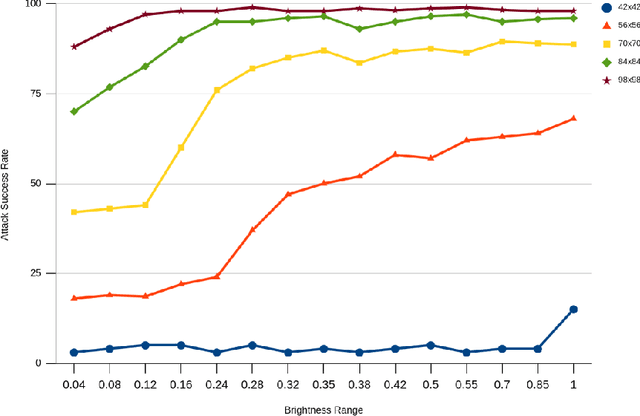

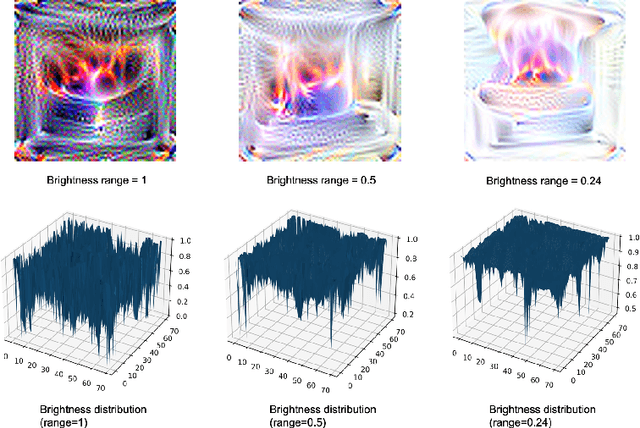

Abstract:Adversarial attack patches have gained increasing attention due to their practical applicability in physical-world scenarios. However, the bright colors used in attack patches represent a significant drawback, as they can be easily identified by human observers. Moreover, even though these attacks have been highly successful in deceiving target networks, which specific features of the attack patch contribute to its success are still unknown. Our paper introduces a brightness-restricted patch (BrPatch) that uses optical characteristics to effectively reduce conspicuousness while preserving image independence. We also conducted an analysis of the impact of various image features (such as color, texture, noise, and size) on the effectiveness of an attack patch in physical-world deployment. Our experiments show that attack patches exhibit strong redundancy to brightness and are resistant to color transfer and noise. Based on our findings, we propose some additional methods to further reduce the conspicuousness of BrPatch. Our findings also explain the robustness of attack patches observed in physical-world scenarios.
Analyzing the Domain Shift Immunity of Deep Homography Estimation
Apr 19, 2023Abstract:Homography estimation is a basic image-alignment method in many applications. Recently, with the development of convolutional neural networks (CNNs), some learning based approaches have shown great success in this task. However, the performance across different domains has never been researched. Unlike other common tasks (\eg, classification, detection, segmentation), CNN based homography estimation models show a domain shift immunity, which means a model can be trained on one dataset and tested on another without any transfer learning. To explain this unusual performance, we need to determine how CNNs estimate homography. In this study, we first show the domain shift immunity of different deep homography estimation models. We then use a shallow network with a specially designed dataset to analyze the features used for estimation. The results show that networks use low-level texture information to estimate homography. We also design some experiments to compare the performance between different texture densities and image features distorted on some common datasets to demonstrate our findings. Based on these findings, we provide an explanation of the domain shift immunity of deep homography estimation.
Improving Head Pose Estimation with a Combined Loss and Bounding Box Margin Adjustment
May 14, 2019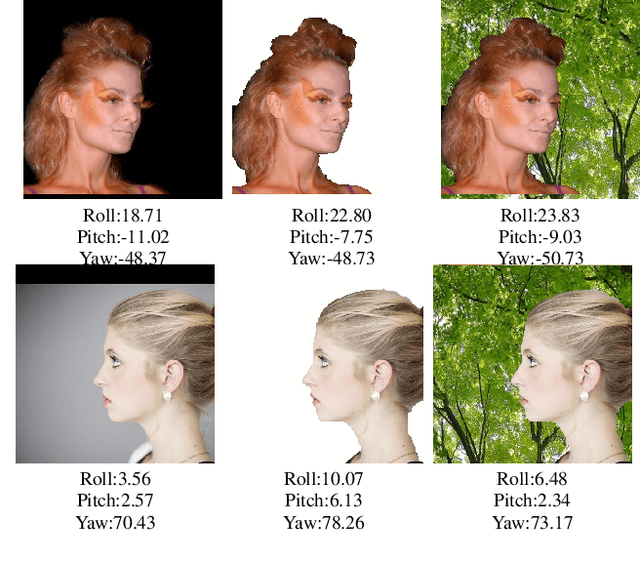
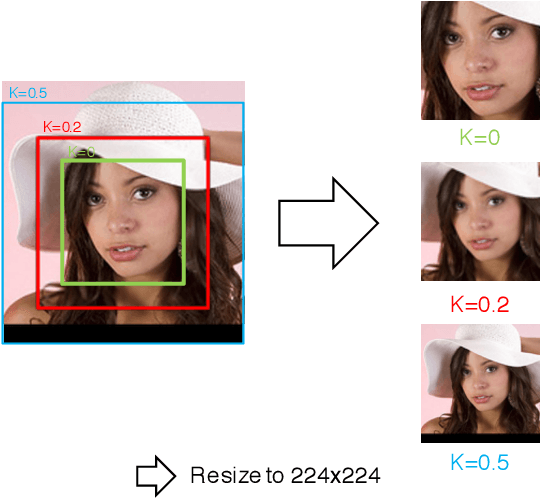
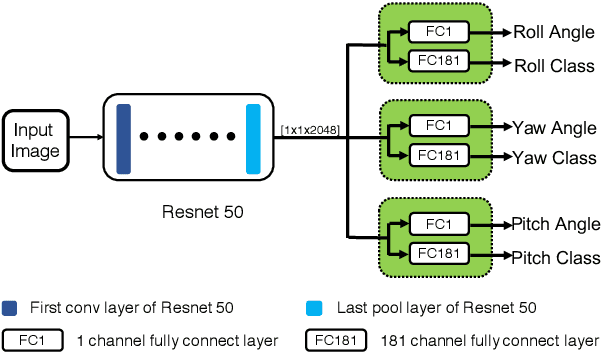
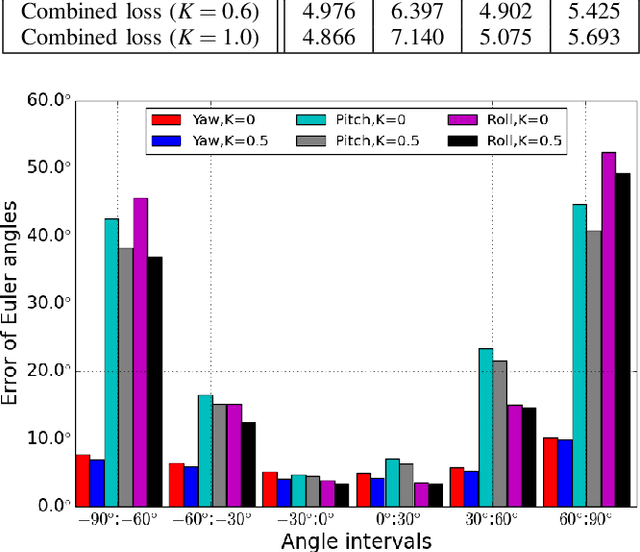
Abstract:We address a problem of estimating pose of a person's head from its RGB image. The employment of CNNs for the problem has contributed to significant improvement in accuracy in recent works. However, we show that the following two methods, despite their simplicity, can attain further improvement: (i) proper adjustment of the margin of bounding box of a detected face, and (ii) choice of loss functions. We show that the integration of these two methods achieve the new state-of-the-art on standard benchmark datasets for in-the-wild head pose estimation.
 Add to Chrome
Add to Chrome Add to Firefox
Add to Firefox Add to Edge
Add to Edge